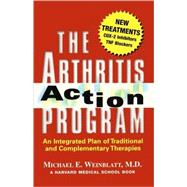
| Introduction | 13 | (2) | |||
|
15 | (4) | |||
|
19 | (12) | |||
|
31 | (23) | |||
|
54 | (22) | |||
|
76 | (32) | |||
|
108 | (25) | |||
|
133 | (32) | |||
|
165 | (36) | |||
|
201 | (17) | |||
|
218 | (33) | |||
|
251 | (29) | |||
|
280 | (24) | |||
|
304 | (19) | |||
|
323 | (8) | |||
| Appendix A Organizations That Can Provide More Information | 331 | (2) | |||
| Appendix B For Further Reading or More Information | 333 | (2) | |||
| Illustrations and Tables Credits | 335 | (2) | |||
| Index | 337 |
The New copy of this book will include any supplemental materials advertised. Please check the title of the book to determine if it should include any access cards, study guides, lab manuals, CDs, etc.
The Used, Rental and eBook copies of this book are not guaranteed to include any supplemental materials. Typically, only the book itself is included. This is true even if the title states it includes any access cards, study guides, lab manuals, CDs, etc.
One of the reasons I became a rheumatologist was the wonderful people I met who had developed arthritis and other types of rheumatic diseases. In my twenty-two years of practice, it has been a pleasure to get to know them, and a privilege to treat them.
They are the inspiration for this book.
The information presented in these pages has also been shaped by my professional experiences. As a physician at Brigham and Women's Hospital, I see patients regularly and conduct research into new therapies, particularly those for rheumatoid arthritis. As a professor of medicine at Harvard Medical School, I help to train the next generation of physicians. And as a member (and now president) of the American College of Rheumatology, I work with colleagues from around the country to evaluate the latest research and develop new guidelines for treatment. In all these endeavors I am constantly reminded of how far we have come in solving the puzzle of arthritis -- and how much further we need to go.
In the past five years we have made enormous strides in understanding what causes arthritis, how to delay or at least slow its progression, and how to treat it. New medications such as the
COX-2 inhibitors and biological modifiers have expanded the options we can provide to our patients. This has been an enormously exciting time for research.
But we have faced new challenges as well. Managed care is reshaping medicine and sometimes curtails the number of options we can offer patients. The explosive growth of complementary therapies has resulted in more questions than answers. And the Internet is quickly emerging as a significant new force in healthcare, with the potential to empower -- or overpower -- us with information.
If you are someone who has arthritis or you are worried that you may develop it, this book should help you can make more informed decisions. The recommendations contained in the following pages are based not only on my own experience, but that of my colleagues in the American College of Rheumatology, Harvard Medical School, and Brigham and Women's Hospital.
Rheumatology requires a team-oriented approach, and this book reflects that philosophy. In the pages that follow you will find detailed information about diet and exercise, medication strategies, physical and occupational therapy, surgical options, and complementary therapies. You'll also find tips on health insurance coverage and cost of treatments, since these factors should be taken into consideration when making decisions.
I hope that you find this helpful. There is as yet no cure for arthritis, but there are plenty of reasons to remain hopeful and optimistic.
Michael Weinblatt, M.D.
Co-director of Clinical Rheumatology,
Brigham and Women's Hospital
Professor of Medicine, Harvard Medical School
Copyright © 2000 by the President and Fellows of Harvard College
Excerpted from The Arthritis Action Program: An Integrated Plan of Traditional and Complementary Therapies by Michael E. Weinblatt, Harvard ,Medical shool Staff
All rights reserved by the original copyright owners. Excerpts are provided for display purposes only and may not be reproduced, reprinted or distributed without the written permission of the publisher.